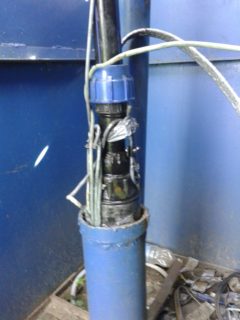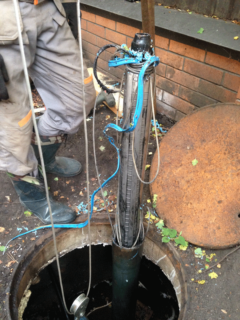With the help of pumping units, water is extracted from the well. Everyone who has come across such a device knows that sooner or later there is a need to get it from the depths. There may be several reasons for such a decision:
- Breakage of a cable or hose (often a person is the culprit for this phenomenon. Many save on high-quality consumables or begin to pull sharply when trying to remove the pump).
- Submersion in silt or sand (occurs due to rare cleaning of the well, as well as to the peculiarities of the soil. Silt partially or completely covers the pump housing, which makes it impossible to lift the unit up).
- Jamming at depth (occurs when the casing is damaged as a result of inaccurate human measures to clean the well or due to the fall of a foreign object).
- Sagging or winding of the electric cable (appears as a result of varying degrees of tension with a cable that fixes the position of the pump in the pipe - a loop is formed, jamming the device).
If there is already a problem with getting the pump out of the well, you should study in detail how to do this correctly so as not to aggravate the situation.
Effective ways to retrieve a pump from a well
1. If the cable breaks, you should find a rod (necessarily made of durable metal). Its length should reach the bottom. A screw nozzle is attached to one edge (it looks like a corkscrew in appearance). On the second side of the rod, a rod is equipped that can rotate this structure. The finished product should be lowered into the pipe and found the jammed equipment. You will have to make a lot of efforts, because you should screw the nozzle into the pump housing. As soon as it has deepened by at least 50% of its length, the equipment begins to rise smoothly.
2. If the reason for the pump stuck when climbing up was the sagging of the power cable, the following instructions will help to eliminate such a malfunction:
- It is necessary to slowly lower the device to the bottom of the well so that the cable, flexible hose and cable are in the same tension.
- After that, you should simultaneously pull the three "ropes" connected to the pump until they are on the same length.
To avoid such situations, you will need to fasten the cable, cable and hose at an equal distance using plastic clamps.
3. In the case when water is rarely used, silting of the pipe or the pump itself may occur. This situation makes itself known as a stuck installation. To get the pump you need to dilute the sludge with water. To do this, it is pumped into the well under high pressure. For such manipulations, you cannot do without additional equipment with an additional source of water. The tube or hose goes down to the very bottom, turns on the water supply and fills its well. At the same time, the cable should be tightened so that tension builds up in the soil lock. Usually it takes only a few minutes to lift equipment using this technology.
5. Jamming of the pump due to mechanical damage to the casing is possible under the following conditions:
- there is a roughness of the welds;
- dent;
- displacement of welded parts or flattened edge of the pipe itself.
If the pipe is damaged, a dull knock appears, and the unit itself wedges tightly. A slight change in the position of the pump will help in this situation. It should be rotated slowly, holding the cable, slowly lifting it out. Then the position is changed. It is important that the device tilts only a couple of millimeters. It is not necessary to exert excessive force when trying to push the pump through a difficult area, otherwise it threatens to completely jam inside the well.
6. Partial or complete immersion of the pump in sand or limestone. To remove the pump, water must penetrate between the ground and the pump wall. The following option is suitable here: you need to slowly pull up the cable (not in jerks!), Alternating its tension and loosening. This process usually takes a long time, but as a result, the pumping station is outside. It is important to remove any residual plaque from the device after it has been lifted. To do this, you need a container in which the pump itself can easily be placed, as well as warm water and vinegar or citric acid. Usually 1 bottle of 9% vinegar or 250 g of citric acid is enough for 5 liters of water. We mix the ingredients and lower the unit into a container for 20-30 minutes. This will help remove limescale, salt deposits and small debris.
7. Change of position of the pump in the well. Such a nuisance happens when the pipe diameter is much larger than the diameter of the device itself. To get the unit, you need to gently shake it from side to side. Movements should be neat and gradual. As soon as the tension in the cable has eased, feel free to pull the pump up. In the future, you will either need to change the pipe in the well, or the water supply device itself. After all, a similar problem can arise all the time.
Output
A pump stuck in a well is a common problem and there are many ways to solve it. If attempts to independently remove the device to the surface have not been crowned with success, it is worth calling in specialists.










